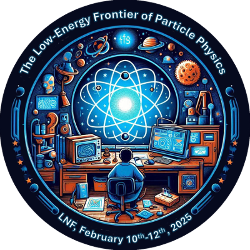Conveners
Gravity and Quantum Mechanics
- Claudio Gatti (Istituto Nazionale di Fisica Nucleare)
Understanding the fundamental nature of gravity at the interface with quantum theory is a major open question in theoretical physics. Recently, the study of gravitating quantum systems, for instance a massive quantum system prepared in a quantum superposition of positions and sourcing a gravitational field, has attracted a lot of attention: quantum optics experiments are working towards...
The Archimedes experiment has the goal to measure the vacuum fluctuations interaction with Gravity. A high sensitive balance is employed to measure the small weight variations of high Tc superconducting samples when they pass to their superconductive status.
We descrive the challenging experimental solutions adopted for having a very efficient heat exchange with the samples only through the...
Today, matter-wave interferometers such as clocks and gravimeters allow precision measurements of time and gravity at unprecedented levels. In all these sensors, the exquisite control of both internal (electronic) and external (center of mass motion) degrees of freedom of ultra-cold atomic samples, enable us to study interactions at their most basic, quantum level, paving the way for new...
In recent years, astrophysical dark matter research is rapidly expanding towards ultralight bosons and new detection techniques are appearing on the horizon. Among these, the detection of small forces at frequency f = mA c^2/h (mA is the mass of the boson) on mechanical systems, a path opened by the Gravitational Wave detectors Virgo and LIGO, particularly in the mass region 10-14 to 10-11 eV....
I will describe two INFN experiments exploiting opto-mechanical resonators for investigating involving gravity. The first is HUMOR, which set upper limits to possible deformation of the standard commutator between position and momentum. The second is GRAFIQO, aiming to detect gravitational interaction between low-mass oscillators.

